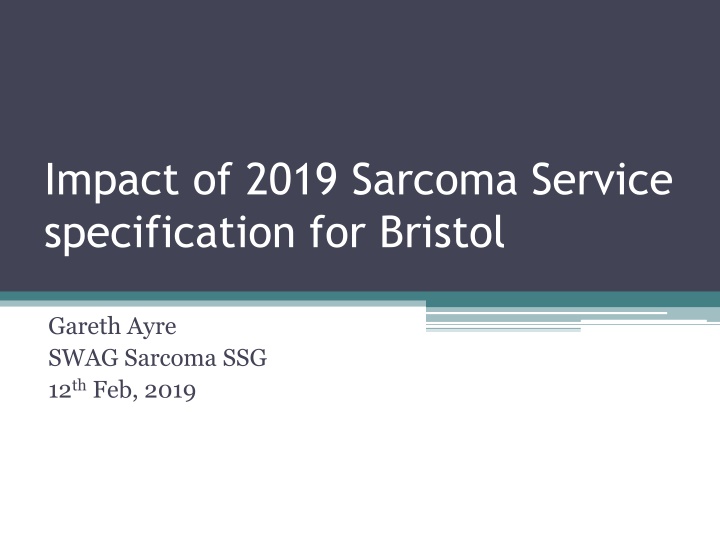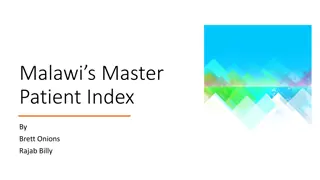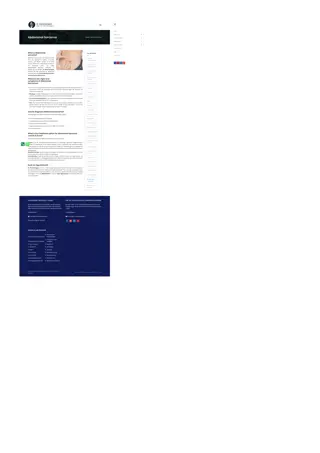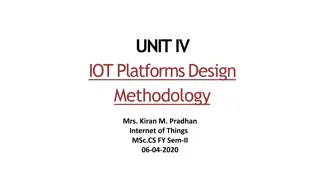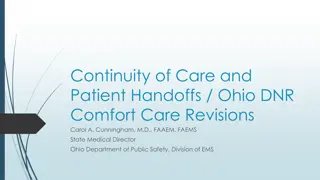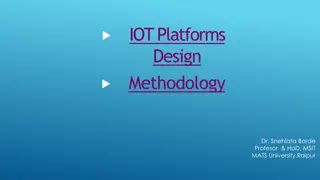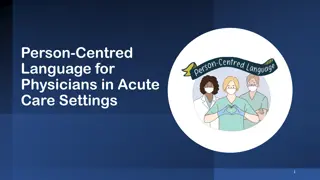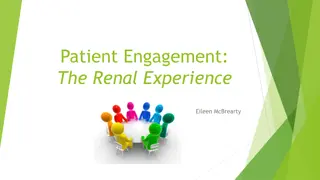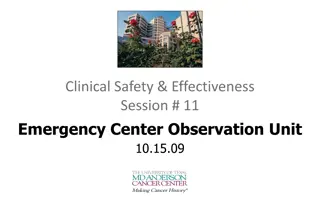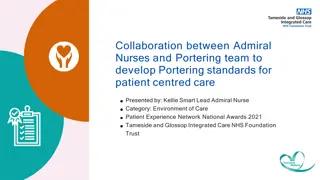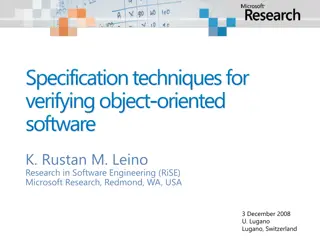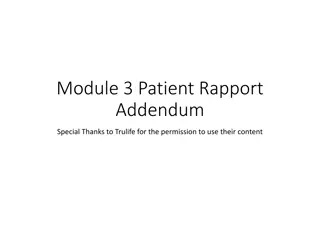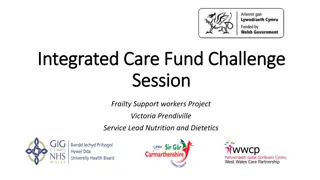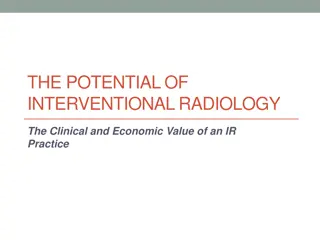Enhancing Sarcoma Service Specification for Improved Patient Care
The impact of the 2019 Sarcoma Service specification in Bristol highlights the need for clearer referral and treatment pathways to ensure all patients receive appropriate care. The rationale for the new service spec addresses variations in Sarcoma Advisory Groups' functions and emphasizes the role of Specialist Sarcoma Centers in determining pathways. The latest service spec aims to clarify roles and responsibilities, increase MDT discussions, and establish quality metrics for sarcoma services. The service models emphasize the importance of referrals, treatment compliance, and patient support post-treatment.
Download Presentation

Please find below an Image/Link to download the presentation.
The content on the website is provided AS IS for your information and personal use only. It may not be sold, licensed, or shared on other websites without obtaining consent from the author.If you encounter any issues during the download, it is possible that the publisher has removed the file from their server.
You are allowed to download the files provided on this website for personal or commercial use, subject to the condition that they are used lawfully. All files are the property of their respective owners.
The content on the website is provided AS IS for your information and personal use only. It may not be sold, licensed, or shared on other websites without obtaining consent from the author.
E N D
Presentation Transcript
Impact of 2019 Sarcoma Service specification for Bristol Gareth Ayre SWAG Sarcoma SSG 12thFeb, 2019
Rationale for new service spec Variation in how SAGs function lack of robust referral / treatment pathways and their oversight. Some patients may not get the most appropriate treatment from the most appropriate team. National Cancer Registration and Analysis Service (NCRAS) shows that only 40-60% of suspected or confirmed sarcoma is going through a sarcoma MDT (although 95% go through an MDT e.g. Gynae / breast)
Principle aims of latest service spec Roles and responsibilities of SAGs, SSCs and LSUs have been clarified especially the role of the SAG in determining referral and treatment pathways for all sarcomas. All patients with a sarcoma diagnosis are referred to the sarcoma MDT number of MDT discussions needs to increase Set (Enforce?) quality metrics for sarcoma services including recommended case quotas
Service model 2.2 - All people with a suspected or confirmed diagnosis of sarcoma must be referred to the Specialist Sarcoma Centre for review by the sarcoma MDT Implies all GIST, skin, breast, gynae sarcomas must also come through our meeting Mechanism to capture these cases? 2.2 Treatment and follow up outside of the SSC must be in line with pathways and protocols agreed by the SAG We have these pathways agreed already but are not always following them 2.2.3 LSUs and SSCs must ensure that services available at each designated LSU, together with details of designated practitioners in each Unit, are published on service websites with information about pathways. Ensure all designated practioners are listed
Service model 2.2.2 - Sarcoma MDTs will ensure up to date information about their shared pathways, activity and Service User outcomes, including information on site-specific sarcomas is publically available. Can SCR provide us with sufficient detail for this? Update website with annual activity report? 2.3.4 define FU guidelines and when it can be undertaken in LSUs 2.3.4 - After treatment, people should be provided with an education and support event, such as a Health and Wellbeing Clinic 2.3.4 All patients should receive a treatment summary System in place for RT. Chemo erratic. Surgery? 2.3.4 - Advanced communication training all core MDT members must attend
Treatment delivery 2.2 new cases of soft tissue sarcoma per year. A soft tissue sarcoma MDT should manage the care of at least 100 2.4 biopsies/excision, will be the subject of on-going audit and results disseminated within the Network Mechanism to do this required. Field in SCR? Unplanned excisions - inadvertent or unplanned 2.4.5 Intra-abdominal including retroperitoneal sarcoma Recommended caseload of 24/year Ability for multi-organ resection Ancillary surgeons (e.g. LGI, vascular, HPB, UGI) require designation Contact nearby STS SAGs to detail our RPS service bolster numbers Consider regular audit of outcomes
Treatment delivery 2.4.6 Gastro-intestinal stromal tumours Recommended annual new case load of 24 / annum People with GIST must have their care plan confirmed by a Sarcoma MDT and treatment delivered by services designated by the SAG Update designated surgeons. Confirm treatment decisions prospectively 2.4.7 Breast - Surgery may be appropriately undertaken within breast cancer services after discussion has occurred with a sarcoma MDT 2.4.8 Skin - People with skin sarcomas must have their care plan confirmed by a sarcoma MDT
Treatment delivery 2.4.9 Chest wall and lung sarcoma Bone sarcoma centres must have clear pathways defining access to thoracic surgery. The SAG must designate no more than one thoracic surgery centre to link to a sarcoma MDT. Metastatectomy and ablation must be undertaken in centres with sufficient caseload volume to ensure at least one case per month 2.5 Children / TYA Paeds representation on SAG Helen Rees? Agree locally-defined care pathways inc referral arrangements and communication Discussion at sarcoma MDT required for non-RMS + extremity tumours Operational policy defining working arrangement with TYA MDT
And finally 4.3 Commissioned providers are required to participate in annual quality assurance and collect and submit data to support the assessment of compliance with the service specification as set out in Schedule 4A-C.
